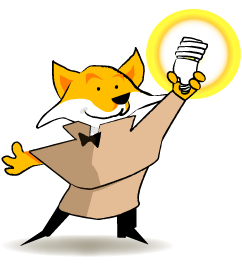Lesson 7: Around and Around They Go
Turbines
Overview
Turbines are a common component in most forms of electricity production. During this lesson, students explore turbines by designing and building blades for a simple wind turbine.
Key Ideas
- Wind, water, and steam can be used to make things happen. In the context of generating electricity, wind energy can spin a turbine.
- Technological design involves using scientific principles to solve problems.
- Predicting, observing, designing, testing, analyzing, and redesigning are all part of technological design.
Lesson Goals
Students will:
- describe how wind, water, or steam can be used to make things happen.
- identify different uses of windmills and wind turbines.
- observe and describe how different blade materials and shapes harness wind.
- analyze turbine designs for strengths and weaknesses and implement some of their improvement ideas.
Lesson Resources
Download Lesson Plan (16 pages, 568 KB)
Windmill Gallery
Cut-a-Way Diagram of Turbine
Wind Turbine Diagram
Exploring windmill design from PBS's ZOOM
Online Extensions
Read a summary of how wind energy can be used to generate electricity.
KidWind offers lesson plans, activities, and a place to share wind energy projects in an online community.
Make a waterwheel following these simple instructions from PBS's ZOOM.
Build an anemometer to measure the wind speed on your school's campus to determine the best place for a wind turbine.
Investigate where and why the wind blows across the United States using a wind resource map from the US Department of Energy.
Listen to students and teachers describe their experiences in the Wind Energy for Schools Project.
Connection to Maine Agencies
MEEP (Maine Energy Education Program) has PV fan and mini wind turbine activities where students make electricity from renewable resources. A MEEP representative will come to interested schools, free of charge for this program.
For schools in Aroostook County, a Maine Public Service (MPS) representative will come to interested schools, free of charge, to guide and support the concepts developed in this lesson.
The Power of the Wind is part of a 4-H national curriculum designed for middle-school aged youth. This comprehensive guide examines wind power in-depth through hands-on investigations and is applicable to the classroom setting. Guides and additional support materials can be found at The Power of the Wind website as well as a information about 4-H wind power afterschool clubs in Maine.



